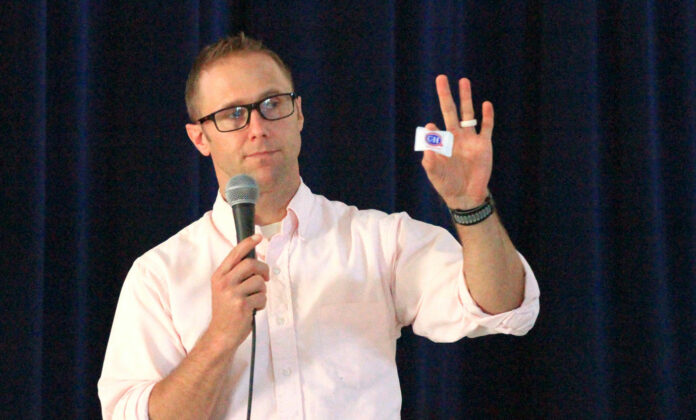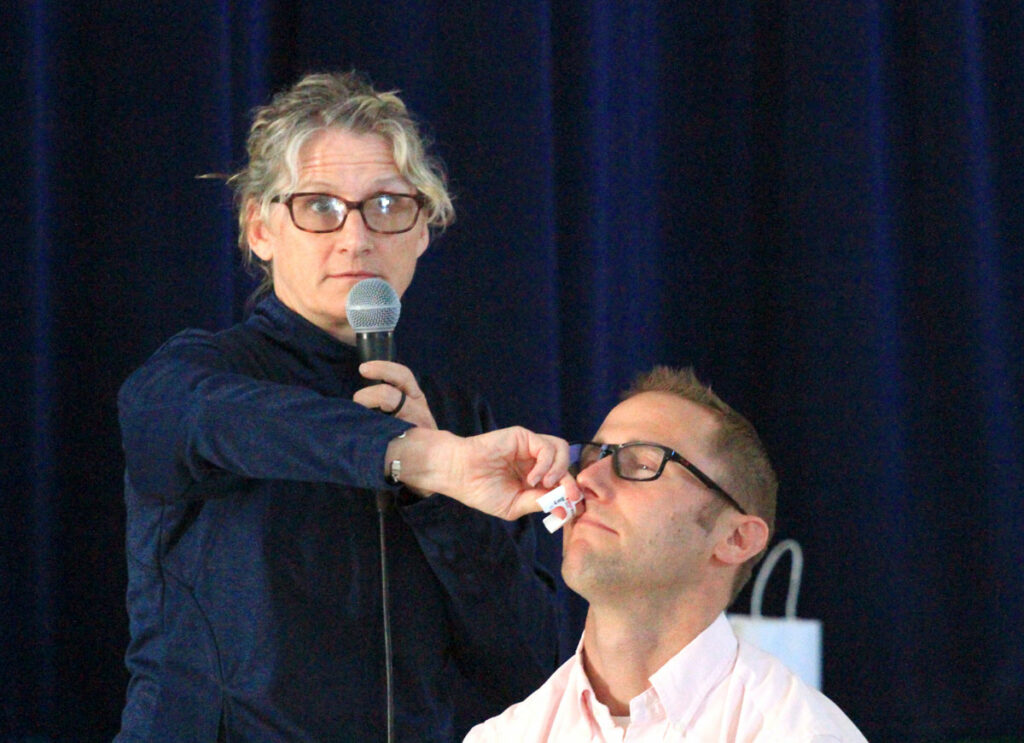
KING CITY — Numerous area organizations partnered to host a Fentanyl Forum Town Hall on July 25 at Chalone Peaks Middle School in King City, with the aim toward improving public knowledge about the narcotic and reducing the rising overdose rate.
The primary panelists were Reb Close and Casey Grover, both emergency room doctors with the Community Hospital of the Monterey Peninsula.
Information from the doctors, plus King City Police Chief Keith Boyd, as well as Angelique Canchola and Darlene Acosta from Sun Street Centers, echoed the point that fentanyl overdoses were on the rise because of the prevalence of the drug, and that intervention can save lives.
In addition to encouraging parents to seek help if they are unsure about something, such as soot on a child’s hands, they also handed out doses of Naloxone nasal sprays to counteract the effects of an overdose.
Two primary points from the presentation were that people can die from even tiny amounts of fentanyl, which is compounded in products made by street vendors and chemists where the slightest error in production can be deadly, and that many who overdose weren’t aware they were taking fentanyl because it’s put into so many other narcotics.
“Unfortunately right now, anything that is bought on the street likely has fentanyl in it,” Grover said. “Unless you yourself go to the pharmacy and get the medicine, it may have fentanyl in it.”
The flexibility of fentanyl means that it can take the form of granules, powders or liquids, and be mixed into anything. Close and Grover showed a common form, tiny blue pills marked with an M and a 30, but noted sellers can and do mix them into anything.
The underlying reason for mixing, Boyd said, was profit for street gangs.
“How do drug dealers make money? By selling a product that makes people get what they want, they get that high, and fentanyl compounds that high,” Boyd said. “But one speck of fentanyl, and no more life.”
Grover confirmed fentanyl is a medicine used at hospitals as a painkiller, but that doses in medical settings are highly controlled because of the drug’s danger. He said it was 100 times stronger than morphine, and the strength of the drug is what causes it to be so dangerous, where a tiny amount can lead to a deadly overdose.
“Eventually when a person gets too much opioid, they will stop breathing,” Grover said. “Without breathing, their oxygen level drops, and eventually the heart stops about five minutes later.”
In addition to dosage amounts not being controlled, consistency isn’t a concern for street vendors and chemists. A fatal dose could all be clustered in one part of a pill, which Close and Grover compared to the way chocolate chips can cluster more to one side of a cookie.
“Because it’s not evenly mixed, even if you break the pill, you could have a fatal dose in only a portion of that pill,” Close said.
Grover held up a sugar packet, which contained 2.8 grams of sugar. Not only is it a small amount of sugar, but also the container is tiny and easy to carry. He said if the contents were instead fentanyl, that same 2.8 grams was enough doses to treat 28,000 patients and to fatally overdose 1,400 people.
“So it’s not very much,” Grover said. “That’s one of the reasons why it’s so common, because it can be sent through the mail.”

Spotting drugs is a problem because of the ease of concealment, both by smugglers and sellers, but also by users. Grover pointed out the common M 30 pills, which are typically blue, have now been discovered in a rainbow form in Monterey.
With mixing into regular drugs, it means being concerned about any narcotics use is warranted, but that has gotten harder to detect with technology.
“One thing that we see a lot of particularly in our schools is vaping,” Grover said. “It can be very hard to distinguish from USB drives. The most common one is probably Juul, where you can see the logo. With vape, the characteristic smells of tobacco and cannabis are not there, and so unfortunately it’s very easy for people to hide their use when they’re using vape because it doesn’t have the odor.”
Close reminded that it’s important for parents to intervene, even at the first signs of drug use.
“One thing we used to understand was people use for a while and then develop dependency and addiction and need treatment, but now what we’re seeing is with the very first use, someone can have an overdose,” Close said. “I have sympathy for our youth because there’s no room for mistakes with the drugs that we have in our community.”
In addition to watching for drug-related items in a child’s room, Close said social media can be a sign of drug use, with teens using emoji codes to request drugs.
“It’s easier than getting a pizza,” she said.
The possible inclusion of fentanyl is what changes an order of cannabis into something that could kill.
“We see it all the time that somebody’s intending to use something else,” Close said. “I had a number of patients clearly only trying to use cannabis who have overdosed on fentanyl.”
She reminded that connection was the best way to combat drug abuse, and that having sympathy for someone is a better course than demonizing them.
“It’s less about what’s wrong with the person and more what’s hurting them,” Close said.
Boyd reminded that his police department’s aim wasn’t to criminalize users, but to track down the sources of drug distribution.
“Arresting somebody will not solve an addiction,” Boyd said. “Treatment solves addictions with the willingness of the patient.”
Close noted visible signs someone is abusing drugs are changes in mood, hygiene and interests. She reminded parents that there’s no shame in seeking out experts to ask questions.
“Addiction often starts in the teen years and the longer it goes before we treat, the harder it is to treat,” Grover said. “If we can intervene and address it early, the more likely we are to successfully treat someone.”
As far as an overdose, Grover said a fentanyl overdose will look like a person being sleepy and unresponsive. The person will then shift toward not breathing or taking small, shallow breaths.
The forum also included a demonstration of how to use Naloxone inhalers, filled with a drug that can counteract a fentanyl overdose. Attendees were then given boxes containing the emergency doses.
“It’s like a fire extinguisher, you never want to use it, but you’re always glad you have it,” Grover said.
Community members were urged to obtain doses of Naloxone, also called Narcan, and have them on hand to treat an overdose should they encounter someone overdosing.
Boyd noted the best response to an overdose is to administer the Naloxone and call 911 immediately. He added that the city is working on numerous distribution sites and doses to give out, with the goal of getting them into the hands of residents to be ready to save a life.













